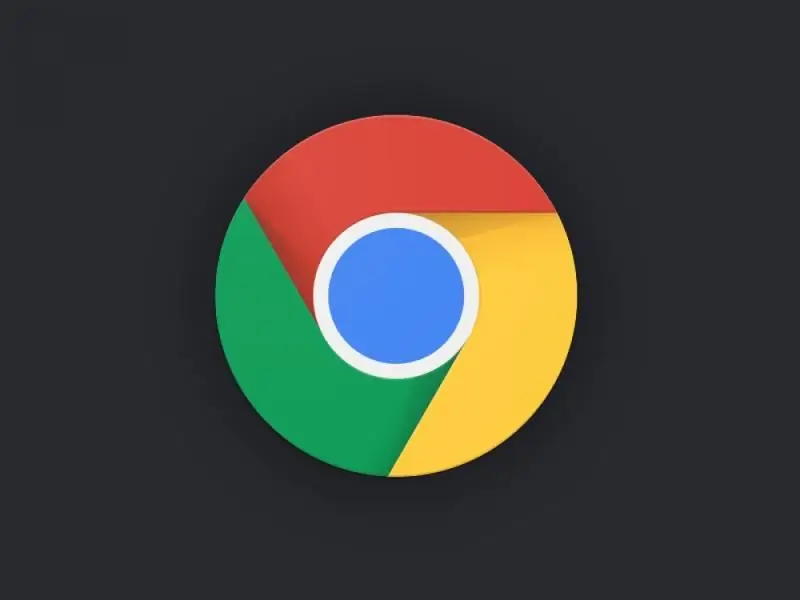
Table of contents:
- Author Bailey Albertson [email protected].
- Public 2023-12-17 12:53.
- Last modified 2025-01-23 12:41.
Google Chrome does not work: reasons and solutions
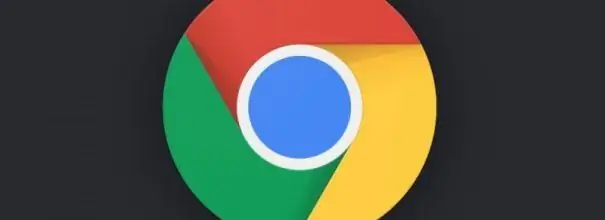
The browser is a popular program with which we open sites on the Internet. And if there are problems in her work, it interferes with the usual way of life, causes inconvenience. Unfortunately, even the best browsers like Google Chrome are not immune to various crashes.
Content
-
1 Causes of problems and their solutions
- 1.1 What problems can arise
-
1.2 Browser shortcut doesn't work
1.2.1 Video: How to Create a Desktop Shortcut in Windows
- 1.3 Random system crash
- 1.4 Incompatibility with antivirus
- 1.5 Virus attack
-
1.6 Incompatibility of the browser version with the operating system
- 1.6.1 Video: where to see the bitness of the operating system
- 1.6.2 Video: Possible Problems When Reinstalling Browser
-
1.7 Damage to system files
- 1.7.1 Video: How to Restore Windows 7 System
- 1.7.2 Video: Windows 10 Recovery
-
1.8 Profile error
1.8.1 Video: How to fix an error in the Google Chrome profile
Causes of problems and their solutions
Sometimes the browser experiences unexpected crashes that prevent you from getting the necessary information on the Internet. As a rule, you need to fix them quickly, so you need to know what errors may appear and how to fix each of them.
What problems can arise
Browser malfunctions can appear due to various reasons: from an accidental failure of settings to damage to system files or a virus attack. In each of these cases, the browser processes are terminated, and the user can observe one of the manifestations of the failure:
- the browser does not start, that is, it does not react at all to attempts to open it;
- starts, but instead of the usual tabs, a gray or black screen is displayed;
- crashes;
- new pages do not open;
- an already open page hangs without responding to any actions.
Often, you can fix the problem in the browser yourself without resorting to the help of computer specialists. Let's take a look at the main reasons that can cause crashes in Google Chrome and how to solve them. But first, let's highlight one problem that can be perceived as a crash in the browser, but is not really such.
Browser shortcut doesn't work
The reason why the browser may not respond in any way to launch may be a non-working shortcut. To eliminate this reason, we will try to launch the browser directly, without using the icon on the desktop. For this:
- Find the chrome.exe executable file. It is usually located at: Local Disk (C:) - Program Files (x86) - Google - Chrome - Application.
-
Run chrome.exe by double-clicking the left mouse button.

Google Chrome browser execution file Run the Google Chrome executive file by double clicking the left mouse button
- If the browser opens, the task will be reduced to replacing the shortcut.
How to replace a label:
- First remove the broken shortcut. To do this, select it on the desktop and press Delete on your keyboard.
-
To create a new shortcut in the context menu of the chrome.exe file, first select "Send" and then - "Desktop". After that, a new shortcut will appear on the desktop.

Create a shortcut to launch the browser In the context menu, select "Desktop (create shortcut)"
Video: How to Create a Desktop Shortcut in Windows
Random system crash
The result of an accidental system crash can be the whole range of problems described above: the browser does not start at all or individual tabs do not open, video does not work, pictures are not displayed, etc. Such a problem arises due to a conflict of programs, and it can be eliminated by a simple restart of the browser first, then, if this does not work, the operating system. However, in practice, various kinds of difficulties may arise, for example, the browser freezes and cannot be closed or cannot be opened after restarting the computer.
If the browser does not react in any way to your actions, you can forcibly close it through the "Task Manager":
- Right click on the taskbar. Select "Start Task Manager".
- Go to the Applications tab.
-
In the list of running applications, select Google Chrome with the left mouse button and click the "End task" button.

Task Manager, Applications Tab In the task manager select Google Chrome and uncheck the task
You can open the browser without using a shortcut, for example, via the "Start" button:
- Go to the start menu. In the All Programs line, enter Google Chrome.
-
The system will find the program. Launch it with the left mouse button.

Search Google Chrome in the Start Menu In the program search bar, enter Google Chrome, and then launch the browser
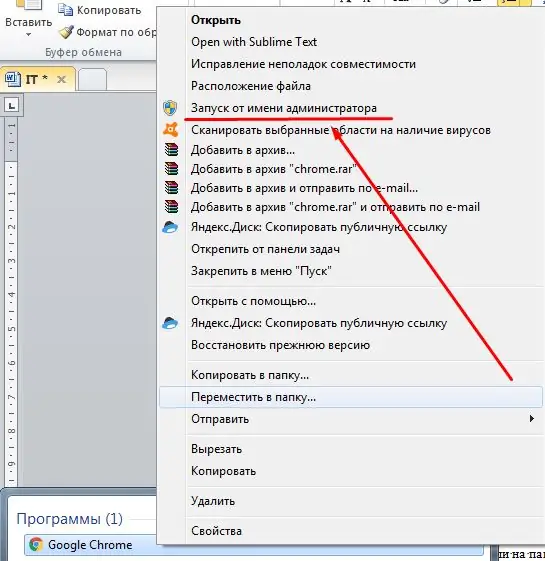
Right-click on the Google Chrome icon and select "Run as administrator"
If the browser slows down and freezes up a lot, it may be due to a regular overload. Google Chrome has a special command for this case, using which you can quickly restart the browser.
- Open a new tab in your browser.
- In the address bar, enter the command: chrome: // restart. Hit Enter.
-
After a few seconds, the browser will first automatically close and then reopen. In this case, all tabs open up to this point will be preserved.

Save the browser restart command to bookmarks If the browser often starts to "slow down" due to overload, the command to restart it can be saved in bookmarks
Antivirus incompatibility
Sometimes developers make any changes to their product that the antivirus can perceive as malicious and block the program from working. Therefore, you need to see which programs are considered unsafe by the antivirus. If Google Chrome is found in the list of threats, it should be moved to the list of exclusions and the browser will work again. Let's see how to do this using the example of Kaspersky Anti-Virus:
-
Open the antivirus and click the "More functions" button.

Kaspersky Free window Open the start window of Kaspersky antivirus and select "More features"
-
The "Tools" window will open. In the side menu, select "Quarantine".

Kaspersky Free - Tools Find the "Quarantine" section and click on it
-
The "Quarantine" window will display the files blocked by the antivirus. If there is Google Chrome among them, you must select it and click the "Restore" button.

Kaspersky Free - Quarantine The "Quarantine" may contain files blocked by the antivirus, select them with the left mouse button and click "Restore"
To prevent Google Chrome from being included in the list of programs blocked by the antivirus, add it to the list of exclusions:
- Click the "Settings" (gear) icon in the lower left corner of the window.
-
In the side menu, select the "Advanced" section, and in it - "Threats and exclusions."

Kaspersky Free - Settings In the settings, select "Threats and exclusions"
-
In the "Threats" parameters, click on "Configure exclusions".

Kaspersky Free - Threats and Exclusions Settings To configure exclusions, select the corresponding line in the options window
-
The program will display a list of existing exclusions, to which you need to add Google Chrome by clicking the "Add" button.

Kaspersky Free - Exceptions Click the "Add" button
-
Using the Browse button, find Google Chrome and click the Add button again.

Adding a new exclusion Find Google Chrome and click "Add"
-
We confirm the choice. After that, Google Chrome will appear in the list of exclusions.

Google Chrome browser in the list of exclusions of Kaspersky Anti-Virus If everything is done correctly, Google Chrome will appear in the list of exclusions.
Virus attack
The situation is much worse in the case of real viral activity, which can cause the browser to malfunction and completely stop functioning. To scan your computer for a virus attack, do the following:
-
Run a full scan of the operating system on the installed antivirus. To do this, first open the "Check" section.

Kaspersky antivirus start menu In the start menu, select the "Check" section
-
Anti-Virus will offer to select a scan option. If you suspect a virus attack, you should select the full scan. To start it, click the "Start scan" button.

The "Scan" window in the Kaspersky antivirus menu If you suspect that there are viruses on your computer, select the full scan mode
-
Wait for the results. A complete system check will take some time. After the scan is completed, the antivirus will report the result and, if threats are detected, will tell you what to do. Usually, options are offered: cure, delete, quarantine, ignore, add to the exclusion list.

Computer scan results Review the results of the system scan and recommendations for resolving the identified issues
- After removing the threat, close the antivirus and restart the operating system.
Browser version incompatibility with the operating system
If Google Chrome has just been installed and has not yet been able to work normally, and when it starts, a gray screen is displayed instead of the usual interface, the cause of the problem is most likely in the incompatibility of the bitness of the operating system and browser, that is, in the wrong version. In this case, Google Chrome will have to uninstall, and then download the correct version (taking into account the bitness of the operating system) and reinstall.
How to find out the bitness of the operating system:
- Open "Start" and "Control Panel".
-
Set the view to "Small icons".

All Control Panel Items Window In the window "All Control Panel Items" select first "Small Icons" and then "System"
-
Find the "System" section. And in it the line "System type", which will indicate the bit depth: 32 or 64 bits.

System window Find the line "System Type" and see what bit depth is indicated
Video: where to see the bitness of the operating system
Reinstalling the browser is a three-step process:
- The old version is removed.
- The registry is cleaned of leftover files.
- The browser is downloaded from the official website and installed on the computer.
How to uninstall the old browser version:
-
Go to "Start" and "Control Panel".

Start and Control Panel buttons In the lower left corner of the screen, open "Start" and then select "Control Panel"
-
Select the "Programs and Features" section.

Control panel window In the main window of the Control Panel, select "Programs and Features"
-
Find and highlight Google Chrome.

Section "Programs and Features" in Control Panel Find Google Chrome and select it with the left mouse button
- Click the "Delete" button and confirm your choice.
Next, you need to remove the remaining browser files from the registry. It is more convenient to do this using the special CCleaner program:
-
Open CCleaner. Select the "Registry" section.

CCleaner window Open the "Registry" and click the "Search for problems" button
- At the bottom of the screen, click the Troubleshoot button. The program will take some time to find all problem areas in the system registry, after which they will appear in the main field.
- Click Fix Selected in the lower right corner.
How to install a new version of Google Chrome:
-
Go to the official website at the link: https://www.google.ru/chrome/. Click the Download Chrome button. Pay attention to the browser version - it must match the bitness of your operating system.

Google Chrome official website page When downloading, select the browser version in accordance with the bitness of your operating system
-
Read the terms of service and click “Accept and Install”.

Google Chrome Terms of Service window Read the Google Chrome Terms of Service and click the Accept & Install button
Video: possible problems when reinstalling the browser
Damage to system files
If you observe the start of the launch (the browser blinks for a split second) and then a shutdown follows, the reason may lie in the damage or modification of system files. You can check the integrity of files using the built-in SFC utility.
How to check:
-
Open "Start" and "All Programs".

Start Menu - All Programs Open the list of all programs from the start menu
- Find the folder "Standard" and click on it with the left button.
-
In the list that opens, we find the "Command line" and call the context menu.

Windows command line Find "Command Prompt" and right-click on it to bring up the context menu
-
We start with administrator rights by selecting the appropriate line in the context menu list.

Run command line as administrator In the context menu, select the line "Run as administrator"
-
The Command Prompt window will open. Enter the sfc / verifyonly command and press Enter. We are waiting for the end - scanning the system will take some time. If the Google Chrome files are corrupted, it will appear in the scan results.

System scan with SFC utility Run a system scan and wait for the results
There are two ways to fix the situation:
- restore the system using a special function. In this case, the computer will return to the state it was before the selected restore point;
- reinstall the browser as described above.
How to restore the system:
-
Go to "Start" and "Control Panel". Select the "Recovery" section.

The "Recovery" section of the control panel In the window "All Control Panel Items" select "Recovery"
-
In the window that opens, find the button "Start System Restore" and click it.

Launch System Restore button in the Recovery window Click the Start System Restore button
-
The system will open a window with Windows restore points corresponding to specific dates and times. Select the one for which there were no problems with the browser. If necessary, check the box next to the line "Show other restore points". Click Next.

System restore points From the list of restore points provided, select the date and time when the browser worked normally
-
A window will open in which you need to confirm the restore point by clicking on "Finish".

Confirming a restore point in the System Restore window Confirm the system restore point and click "Finish"
Video: how to restore Windows 7 system
The recovery process in Window 10 is similar, the only difference is in the system interface elements.
Video: Windows 10 Recovery
Profile error
In some cases, the browser informs the user about the problem, for example, by sending messages about the incorrect loading of the profile. In such a situation, the browser works as usual, but certain functions may not be available: search history, Chrome extensions or applications, and others. In addition, the frequently appearing error message distracts from the tasks being performed and becomes annoying over time. Therefore, it is better to eliminate the reason for the incorrect loading of the profile.
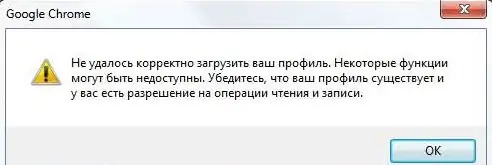
If Google Chrome found an error in the user's profile, he will certainly report it
How to fix the error:
- Press the key combination: Win + R.
-
For Windows 7, 8 and 10, enter% USERPROFILE% / AppData / Local / Google / Chrome / User Data / into the address bar of the Explorer. For XP version -% USERPROFILE% / Local Settings / Application Data / Google / Chrome / User Data /.

Window with a command input field Enter the command in the appropriate field and click OK
-
Find a folder named Default.

Default folder Find the Default folder and open it
-
Delete the Web Data file in this folder.

Web Data File Find the Web Data file and delete it
Sometimes the file you want cannot be found. This may be due to display settings.
What to do:
-
We go to "Start" and "Control Panel". Select the section "Folder Options".

Folder Options section in Control Panel In the main window of the control panel, select the section "Folder options"
-
Go to the "View" tab and go down to the bottom of the "Additional parameters" list.

Folder Options Window Set the option "Show hidden files"
- Check the box next to "Show hidden files". Click OK.
Video: how to fix an error in your Google Chrome profile
We have covered the main situations in which the normal functioning of the browser is disrupted and the solutions. Our instructions will help you troubleshoot the problem and continue using your favorite web browser.
Recommended:
What To Do If, After Flashing Android, The Phone Or Tablet Does Not Turn On, Does Not See The Network, Does Not Charge

Why does my smartphone or tablet not work after changing the Android version. How to troubleshoot various problems. How to properly reflash a device
Why On Windows 10 The Start Button Does Not Work And The Main Menu Does Not Open
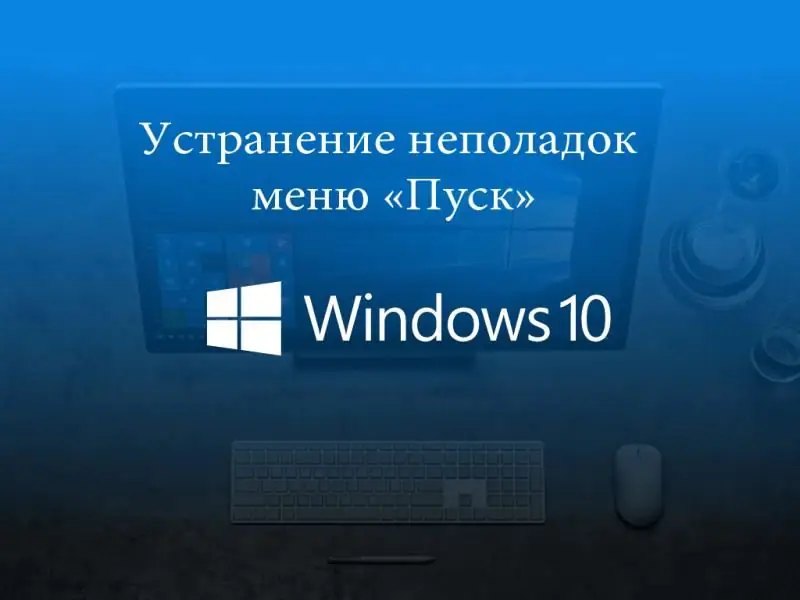
The most common problems in the "Start" menu on Windows 10. The reasons for the appearance. Solutions: universal and for specific cases
How To Update The Google Chrome Browser To The Latest Version, Including Through The Official Google Chrome Website - Instructions And Photos
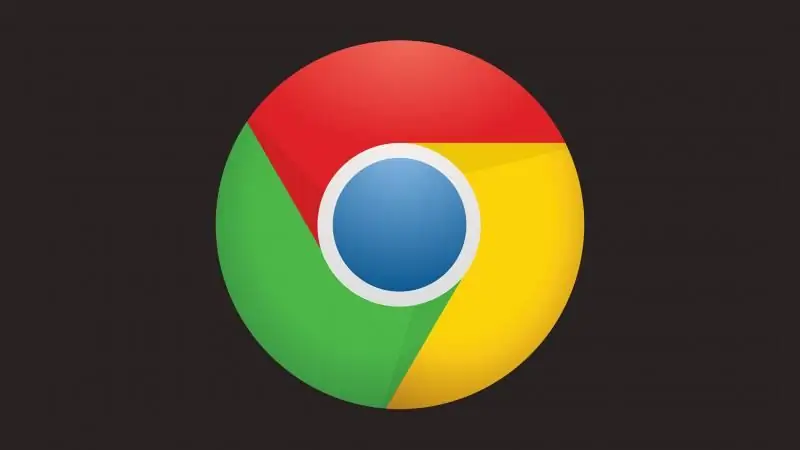
Why you need to update Google Chrome and how to do it for free. What to do if the update failed
What To Do If Yandex Browser Does Not Open On A Computer - Why The Program Does Not Start, How To Make It Work

Why "Yandex Browser" does not open in Windows. Solution to the problem: disabling autorun, updating and reinstalling the browser, clearing the cache and registry
The Phone Fell Into The Water: What To Do, Including With An IPhone In The Toilet, If The Gadget Does Not Turn On, The Speaker Does Not Work
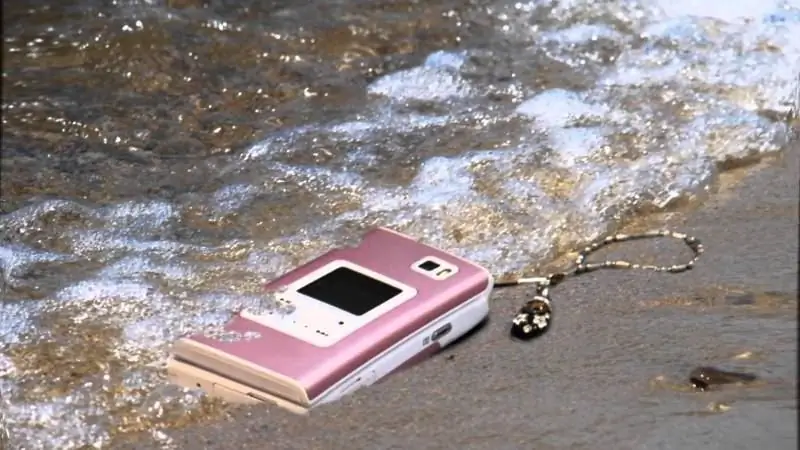
What to do if your phone falls into the water: instructions for saving your phone. Features for different models. Frequent misconceptions. Possible problems after drying
